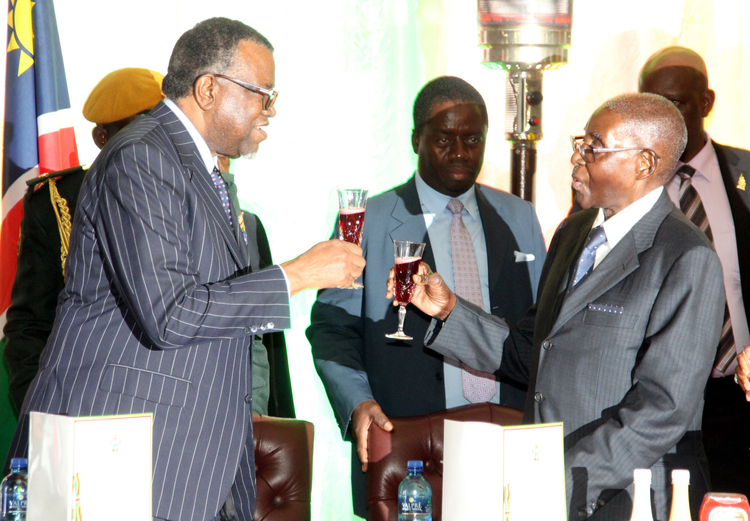National bull, heifer sale preparations on coarse

Preparations are at an advanced stage for the prestigious annual National Bull and Heifer Sale 2017 which will take place on Friday July 28 at the Mt Hampden Sale Pens, Lomagundi Road and is expected to attract a large crowd of both buyers and sellers.
The National Bull and Heifer Sale is organised by the Zimbabwe Herd Book (ZHB), the umbrella body of the various pedigree breed societies dedicated to improving the country’s cattle seed stock.
There have been numerous milestones in the 48-year history of the National Bull and Heifer Sale and this 49th National Sale promises to establish more.
The link between the National Bull Sale and breed societies dates back to the 7th National breed sale in 1975, when the Simmentaler Club decided to combine their annual sale with the national sale.
The sale attracted interest from 6 000 breeders in both South Africa and Zimbabwe and high quality Aberdeen Angus, Ayrshire and Friesland bulls were entered amongst other breeds. Since then the other breed societies, through ZHB, have been the main organisers of the National Sale, ensuring that only animals with proven performance are presented for sale to the benefit of beef farmers.
Further measures to ensure good quality animals are offered for sale were introduced in subsequent years.
At the 1994 National Sale, the then chairman of ZHB, Mr King, mooted the introduction of performance recording based on Estimates of Breeding Values (EBV’s) to provide buyers with information on the attributes of the bulls on offer.
The sale also saw expansion of the breeds on offer to include Brangus, Sussex, Tuli and Limousin bulls. The 1995 National Sale was described as “….the most complete sale of beef bulls on the African continent” and the 1996 sale included top Braford, Senepol and Charbray bulls as well as 54 Brahman’s, 5 Salers and 25 Charolais. By the 1997 sale, most buyers had become aware that stud breeders were breeding for performance, an exciting new era of progress. Three Bonsmara bulls were offered for the first time along with Aberdeen Angus, Limousin and Tuli.
The 30th sale was held in 1998, a milestone in history. Performance recording had become the norm and coupled with the best genetics available worldwide, the buyers selected their bulls with “greater confidence than ever”.
Many breed societies also screened the bulls on offer at this sale so that only the very best bulls were entered. The Chairman noted …… “that 30 years of quality breeding and bulls have gone – the next 30 should be even better for our customers who will reap the benefit of breeding backed by comprehensive records”.
In 1999, traceability was the order of the day and both stud and beef producers contributed to the national livestock database. Beefmaster and Gelbvieh bulls were offered for the first time at the sale.
In 2000, the National Sale catalogue highlighted the performance data of all bulls entered onto the sale and buyers could make meaningful use of this information. The implementation of the Zimbabwe Cattle Traceability Scheme meant that producers could exploit the international market and export beef to the European Union. All breed societies also screened the bulls on offer.
In 2001, all bulls on offer were performance recorded and buyers had become more discerning, using the data as a tool in the selection and purchase of bulls.
Post 2001, the trend in increasing diversity of breeds as well as bulls from a wide variety of farming environments continued. For instance, at the 2006 sale, two Nguni bulls were on offer from the Matabeleland area, 20 Tuli bulls were selected for the sale from the Bulawayo, Gweru and Selous areas. In 2007 and 2008, two Montbeliarde bulls were on offer from the Nyanga district for the first time and one Blonde De’Aquitane bull from the Harare South area, respectively.
In 2010, ZHB contracted the Agricultural Business Research Institute for the use of BreedPlan®, a world leading performance recording system. Stud breeders are now in a position to evaluate the performance of their bulls over a wide range of conditions under which beef is produced. The improved confidence in the quality of Zimbabwean bred bulls has been accompanied with substantial prices increases. For example, in 2013, the highest price paid for a Brahman was $10 000, closely followed by a Boran bull, purchased for $9 000. At that sale, Droughtmaster heifers attracted the highest price for the lot while Mashona bulls and heifers were on display for the first time at the Sale, attracting wide interest. The Mashona breed is indigenous to Zimbabwe and has the highest fertility and best calf survival rate based on the largest breed evaluation study ever carried out in Africa undertaken by researchers at Matopos Research Station. Boran cattle, whose origins date back 1 300 years ago in the horn of Africa, have made an impact in Zimbabwe.
They are known for their fertility, early maturation, hardiness and docility and are well adapted to local conditions and parasites.
This year’s National Sale comes during a season when the country has been blessed with an excellent rainy season following two years of devastating drought.
Thus, it is anticipated that there is going to be greater participation by farmers as they seek to restock their herds.









Comments